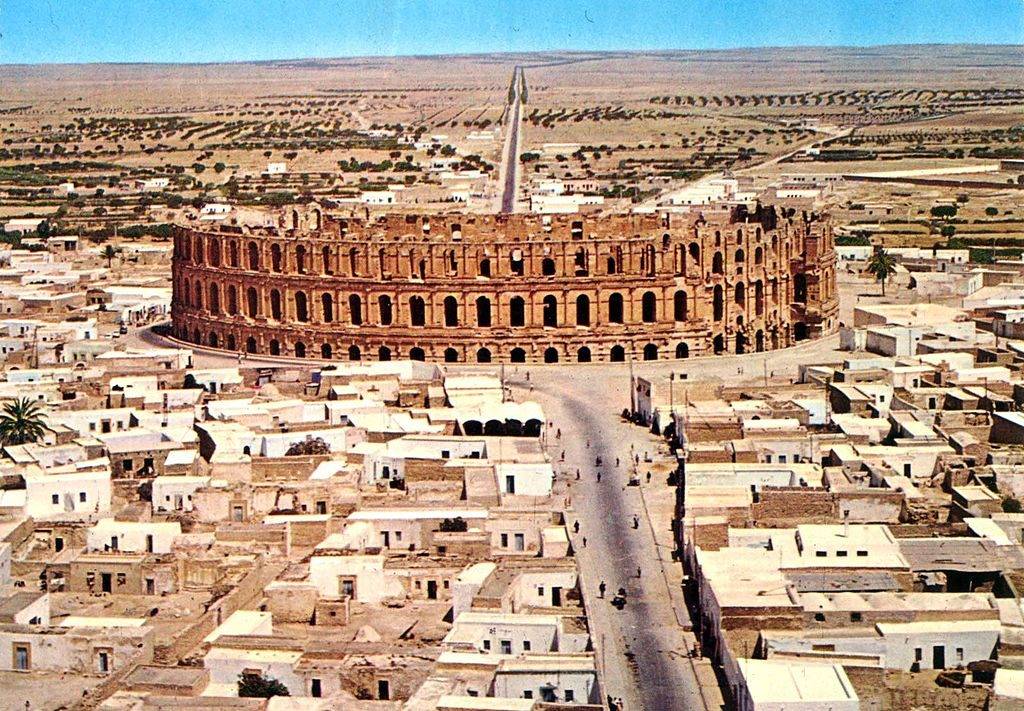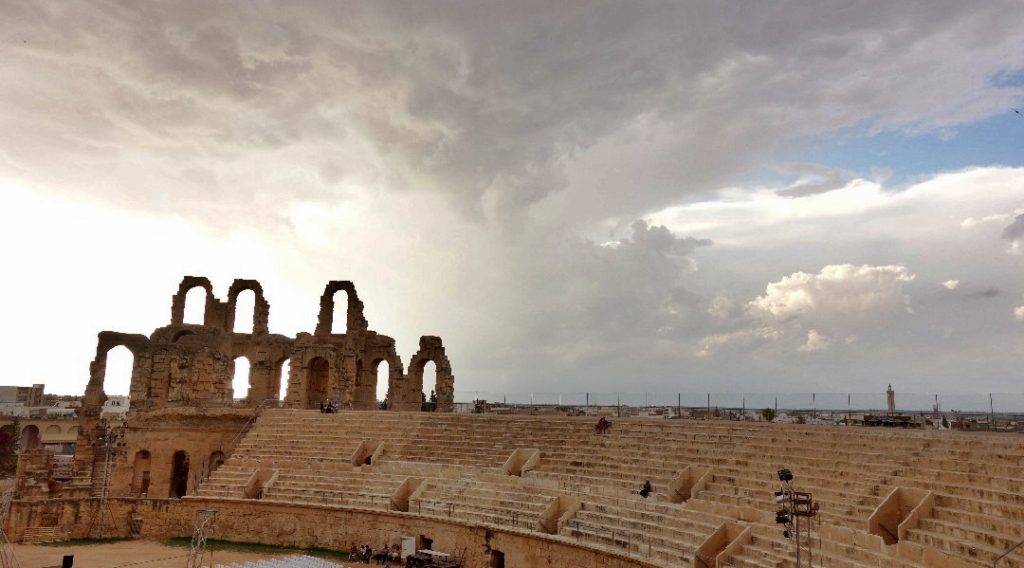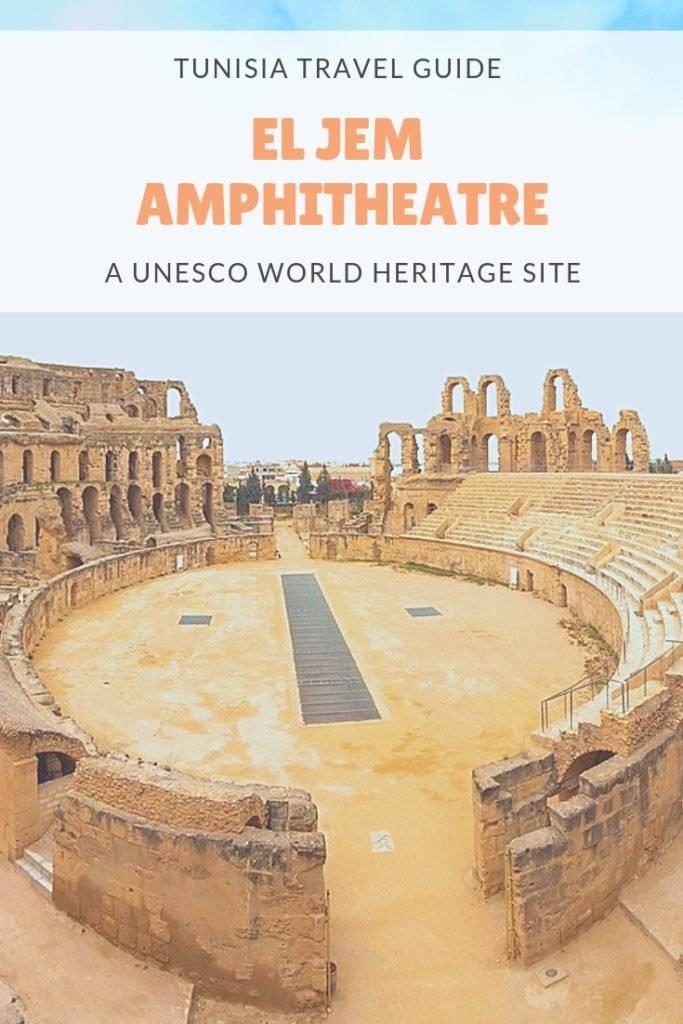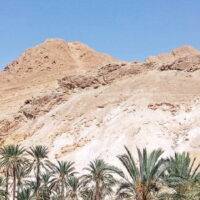
El Jem Museum and Amphitheater
Last Updated on November 5, 2022
El Jem is famous all over Tunisia for its spectacular amphitheater, a UNESCO world heritage site, and for the El Jem Museum of Archaeology, home to many wonders. El Jem is home to the third-largest amphitheater left in the world after the one in Rome and the one in Capoue, and it’s also Tunisia’s most significant ruin from the Roman Empire.
Disclaimer: This post contains affiliate links, which means that if you click on any links and make a purchase, I’ll get a small commission, at no cost to you.

Located between Sousse and Sfax, El Jem is in the heart of Tunisia’s olives region. Now a small town, El Jem used to be one of Tunisia’s wealthiest cities during the Roman Empire era, then called Thysdrus. In this arid region, getting water can be hard, the Romans built the amphitheater so it could also be used as a cistern, collecting the rainwater and distributing it through an intricate pipe system.
The amphitheater was built at the beginning of the third century, and it led the inhabitants of El Jem to their doom. Showing so much wealth attracted Rome and the emperor who decided to increase the taxes on the province. In 228 AD, the landowners supported by the peasants started a revolt against Rome, killing the Roman procurator. Emperor Maximin responded by sending troops to destroy the city.

El Jem amphitheater is unique, built in an elliptic shape using golden sandstone, the architects mostly used the Corinthian architectural style. You might notice Punic influences (in the proportions) and African (no bricks were used). It’s the only building, with the Coliseum in Rome, to have three levels of galleries. It could host up to 30 000 spectators; located in a critical crossroads, many merchants passed through the busy city of El Jem.
It’s the last great structure built during the Roman Empire Era. The architects took inspiration from the Coliseum in Rome but, being built 150 years later, the amphitheater benefited from several innovations such as the water system and the way the underground was made: backstage, with a central hallway, lined up with 16 cells for animals and gladiators.

El Jem amphitheater is also rich in history, it often served as a fortress in times of war. Especially in 693, when the Zenete Queen, Kahena, had to get shelter with her army in El Jem after losing a battle. Kahena had succeeded in federating the Berbere tribes to fight against the Omeyyades. But unfortunately, she, later on, got captured and executed. She’s the figure of the Berbere and women fight and got nicknamed the Jeanne of Arcs of North Africa by the Occidentals.

Centuries later, in 1695, Ali Bay’s supporter took shelter inside the Amphitheater to escape from Mohamed Bay’s troops who didn’t hesitate to attack the amphitheater, destroying parts of it. In the following century, locals didn’t hesitate to steal materials from the ruins to build their own houses. It’s only in the 20th century that the monument became protected and that restoration work started to take place.

Not far from the amphitheater, you should also visit the El Jem Museum of Archaeology. It collects the different mosaics found around El Jem in what used to be luxurious Roman villas, and they are incredibly well preserved.
In one of them, you’ll notice several Swastika, a Hindu symbol. Before Christianity, Hindu religion was common in Europe and the middle east, the spread of the faith is believed to be based on the expansion of the nomadic Aryan tribe across Europe and Iran. So it’s common to see Hindu symbols on Roman and Greek artifacts, even if it’s not known. Other experts believed that the symbol came before Hinduism and was adopted by several different religions.
Entrance fee: DT 10 for a combined ticket (El Jem museum and amphitheater).
Open every day from 7 am to 6:30 pm from April to September and from 7:30 am to 5:30 pm during the winter.
Coming back from the El Jem Museum, if you walk along the train track you’ll see a smaller amphitheater in ruins, dating from the same period as the main one, but not as well preserved.
If you decide to go there as a day trip, go in the morning because transportation stops early there, the last louage for Sfax is at 4 pm. Don’t count on the train either; it’s often really late. There’s not much to do in El Jem apart from visiting the amphitheater and the museum. If you decide to stay overnight, there’s a hotel right next to the train station.
You can also take a tour from Tunis if you don’t have much time.
Like it? Save it for later:











